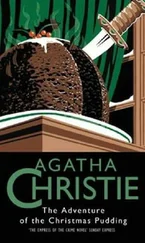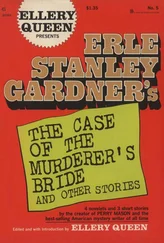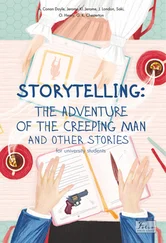which might have been a little barn at any other farmhouse. She pointed out what was undoubtedly his former workshop. A wooden bench and a tree stump on which he used to sit amidst the disorderly trash confirmed this. Set on the sill of a small window, which was the only place through which the sunlight entered, were a half-broken measuring device and a number of chemical bottles. Slips of paper with prayers invoking protection from fire were pasted on the lintels between the doors and ceiling. Cleaning his house and putting it into the kind of shape that would enable a person to live in it was going to be far from easy. The moment I set foot in this house, I rejected it as a home to which my friend could evacuate.
Standing in the middle of this
doma,
where disorder was really carried to extremes, I surveyed this dingy corner that she had called a fireworks factory. I couldn't imagine what sort of appearance or mien the strange dead Hosen Hara had possessed, but the image that first drifted into my mind at that moment was one of some sort of shriveling, sluggish animal crouching in that dark spot. Could it have been because he used to sit on that tree stump in front of that wooden bench, fingering black or red or yellow powders in that measuring device? The sunbeams would be floating in, creating bands of light behind him, but the atmosphere surrounding those sun-rays would be stagnant, dark, and cold. Certainly, that was the picture I had of Hosen Hara in this dark and wretched house, forever beyond redemption — a much more miserable picture than I ever had of Hosen Hara, the counterfeiter.
"There's something about this I don't like," I thought. And the moment I thought this, I recalled the marvelous spirit that had pervaded the
sumie
painting by Hosen that Takuhiko Onuki and I had chanced upon at the inn in Himeji. I had the feeling that something closely resembling what was latent in that
sumie
painting filled this eerie, deserted house, but this time in a much more foul and filthy form.
As we were leaving, we went around to the back of the house. It was then that the old woman showed me Hara's grave. Behind the house was a small vacant lot which ended in a six-foot drop. Near the edge of the drop, a nondescript, ordinary stone — Hosen's tombstone — was set half-buried in the weeds. Out beyond that small tombstone loomed the prospect. In the distance you could see the numerous ridges of the mountain range, one upon the other, rolling in gentle slopes, and closer, as you dropped your eyes, the separate village houses studded the flats, looking in their smallness like toys, luxuriant with the many surrounding trees. It was April, but this was not a spring landscape. The whole landscape seemed submerged as though it were an underwater scene — and cold.
That night, I heard from the usually extremely poor conversationalist, Senzo Onoe, a somewhat detailed story about Hosen Hara's declining years in this hamlet.
According to that story, Hosen Hara and his wife Asa came back to this hamlet the year the Manchurian Incident broke out, in a condition that could almost literally be called "with only the clothes they had on their backs." They hadn't brought a single piece of baggage that could really be called baggage, but on the other hand, they apparently had a certain amount of money. They had bought the House on the Heights, as it was called in the village, which had become vacant when the preceding occupants had all died of consumption one after another. They had gotten the house for a song — but that was the asking price — had immediately paid cash for it, and moved in.
It was soon after moving to this village that Hosen began to palm off those works that the village headman, Onoe, and one or two other families in the village claimed were Keigaku scrolls. Before he was twenty, when he had left the village, Hosen had said he would become an artist, but since he had really only returned once or twice until his later years, there was almost no one in the village who knew anything in detail about his character. At one point, a long time ago, there had been rumors in circulation in the village that Hosen had become a successful painter in the Kyoto-Osaka area. Because of this, whenever the villagers mentioned him in their conversations, there was something in their stories that indicated that they casually regarded Hosen as a person who had left the village and succeeded in the city. Accordingly, the villagers were a bit surprised at the wretched condition he was in when he came back home in his later years. Hosen told them then that he had come back to the country because in recent years his right shoulder had been so wracked with pain from rheumatism that he could not wield his paintbrushes and delicate work was impossible and that, in addition, his savings had run out.
When he had settled down in the village, he didn't do any kind of work in particular, but from time to time he could be seen taking his scrolls and curios to Yonago, Okayama, Tottori, and other places and bringing different things back. At any rate, he seemed to be eking out a living carrying on some sort of art business in the countryside.
Hosen had left a fairly good impression on the villagers, and there wasn't any particular single instance of his doing anything to cause trouble for other people. People would call him "Hosen-san, Hosen-san," with more or less mixed feelings of respect and affection. But after a while, as time went on, he started to go to other places less and less frequently; rumors began to circulate to the effect that he was tinkering with gunpowder — actually he was making firecrackers and fireworks and selling them to the toy stores in Yonago — and at some point he gradually came to be called simply "Uncle Hosen" by the villagers.
Of course, even though he was engaged in making fireworks, it was illegal. It would seem that even when he first moved into the village he had already been working with gunpowder. Once, late at night, Onoe said, balls of fire were flying directly over Uncle Hosen's house, and the villagers became greatly agitated. Later, when they learned that these things were sky rockets that he had shot off, they were very shocked.
In the third year after Hosen moved to this village, he exploded some gunpowder and lost three fingers from his right hand. After that accident occurred, a resentment developed among the villagers toward the repugnant things that he had been tinkering with, and Hosen rather abruptly lost his popularity with them. Curiously though, after he had had the accident, Hosen turned cocky, and from then on he produced half-publicly the fireworks that he had been turning out furtively until then.
The villagers did not go near Hosen's house very often, but on the rare occasions when they did try poking around his house, they would find him in the workshop he had converted from a barn or see him sitting there constantly making all sorts of toy fireworks, apparently on order for Yonago.
It was just half a year after Hosen lost his fingers that he and his wife Asa separated. At that time, even though she had deserted him, Senzo Onoe acted as a go-between and went to Asa's family home at Shoyama to appeal to her to come back to Hosen. But Asa simply and persistently just kept saying, "
I won't do it!
" Neighbors one after another also went up to Shoyama two or three times, but it was useless. At length, Hosen said that if he was such a despicable person, he, for his part, would abandon the idea of reconciliation with Asa — and that would be that. The villagers furthermore did not particularly condemn Asa for leaving the husband to whom she had been married for such a long time. Minus the three fingers, Hosen's right hand was quite unsightly, and as he tinkered with gunpowder in his dismal workshop, he had a gloominess that would cause anyone to despise him, even a wife.
Читать дальше












